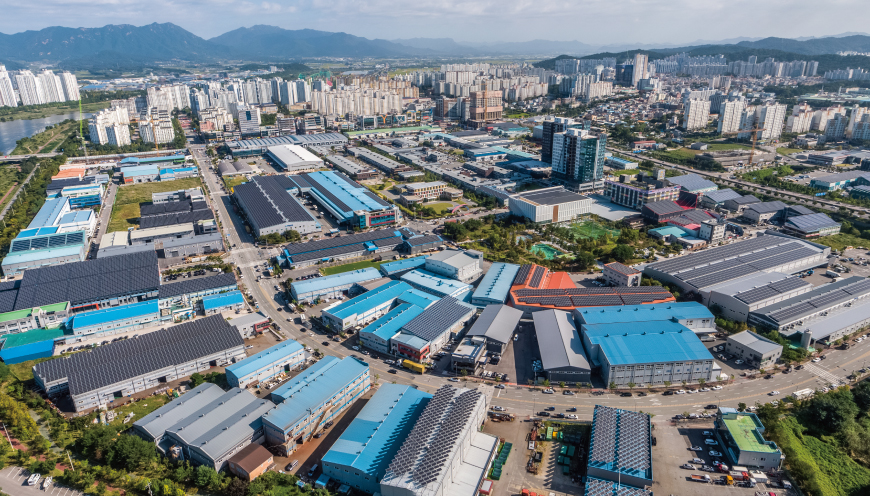Gwangju Science Valley (also known as Gwangju High-tech Science and Technology National Industrial Complex) was established in 1991, covering an area equivalent to about 344 soccer fields. The Complex is leading the local economy, housing 42.2% of companies operating in the Gwangju region’s industrial complexes and accounting for 19.7% of the region’s production and 28.1% of employment as of 2022. The valley specializes in high-tech industries such as new materials, optics, digital IT home appliances, and high-tech parts and materials. As of Q1 2023, a total of 2,143 companies are operating in the valley.
Overview of the Industrial Complex
- Title: Gwangju Science Valley
- Location: Daechon-dong, Yeonje-dong and Sinyong-dong of Buk-gu and Bia-dong of Gwangsan-gu, Gwangju Metropolitan City
- Area
(Unit: 1,000㎡)
Area of specialization
Gwangju Science Valley is the only optical industry cluster in Korea providing production, residential, and commercial facilities and focuses on ICT-based electronic parts industries such as semiconductors and optics. The optical industry uses the properties of light to produce products. It is knowledge-based and technology-intensive, experiencing fast technology changes, causing less environmental pollution and focusing on R&D functions. Semiconductor giants such as Samsung Electronics and Amkore Technology Korea are operating in the valley, as well as the Gwangju Institute of Science and Technology, the Korea Photonics Technology Institute, and the Korea Electronics Technology Institute.
Changes in industrial structure
Recently, more large-scale knowledge industry centers were introduced in the valley, leading to changes in industrial structure. As of the end of 2022, the construction of 10 new knowledge industry centers were completed and attracted companies specializing in IT and AI. According to the valley’s management agency, the number of companies operating in the valley is expected to reach 2,700 by the end of 2023. In addition, an AI-centered industrial convergence cluster has been established in the adjacent R&D Special Zone High-Tech District 3, bringing changes in Korea’s industrial, economic, and job structure.
* Source: (Text/photo) Korea Industrial Complex Corporation











